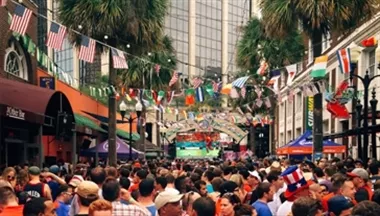
As the COVID-19 pandemic began to increasingly affect cities across the U.S. earlier this year, a number found they needed to quickly determine a way to provide citizens with access to key city services—and, at the same time, enable municipal employees to work remotely while sheltering in place. The city of Orlando was well-prepared to respond to both needs, due in part to the Orlando.gov website it had introduced in 2019—which offers numerous online services, according to Karyn Barber, who serves as a public information officer for Orlando.
Orlando was a 2017 Smart Cities Council Readiness Challenge Winner
One of five (5) winners of the Council’s Readiness Challenge and the subsequent program, Mike Hess, director of Orlando’s Future Ready technology and innovation plan says, made the involved officials realize the city should develop a comprehensive smart technology plan—based on what issues need to be solved, and any technologies or business models they can identify that might be helpful—instead of just jumping into smart technology use. “What [Readiness Challenge] it really helped us do is outline where we wanted to go from a smart city perspective; and it wasn't to just start looking at shiny objects and widgets to make the city better,” Hess says. “It actually made us think less about technology and more about engaging our community to figure out what issues they really wanted us to solve. Now we’re developing that plan.”
See article about Orlando's Readiness Workshop
See article about Orlando's vision
Benefiting from easy access to materials
The Orlando.gov site allows local businesses and residents to perform dozens of actions online, such as submitting a building permit request; with a laptop and VPN connection, city employees have also been able to access the resources they need to complete work at home. “We were doing a lot [online] already because we were so focused on offering a digital city hall-type service,” Barber says. “Certainly, [having transitioned services online] early has been incredibly beneficial in the current crisis climate.”
In recent months, the city has also pivoted to host virtual city council meetings. “It’s something we had to turn around very quickly,” Barber says. “We used Microsoft Teams to help conduct the [first] meeting, and we also implemented some forms and ways people could continue to provide public comments, if they chose not to appear in person.”
Protecting residents in the region
Citizen safety—whether it’s a social distancing-friendly way to attend city council meetings or reducing the risk involved in walking across an intersection—has been a continued focus for Orlando. Officials discussed the possibility of using intersection monitoring and analytics to help increase pedestrian and bike safety at the Readiness Challenge workshop it participated after being named a 2017 Smart Cities Council Readiness Challenge Grant recipient. “We talked at the workshop about different technology or methods to install for that,” says Hess. “One of the things, from a technology perspective, around pedestrian safety is looking at sensors, camera networks and smart streetlights, and leveraging that technology to make our streets safer.” The city is currently in the process of finalizing the details for a smart streetlight pilot program, which could potentially start this summer.
Moving forward with a strategy for the future
In addition to its public safety efforts, Orlando has also, according to Hess, introduced a number of tech initiatives surrounding efficient energy consumption in recent years— including:
- Conducting an energy audit to examine how hundreds of city buildings were using energy
- Comparing buildings’ energy usage data to national benchmarks
- Creating a dashboard to serve as a singular place to view energy consumption data trends over time, which, Hess says, has prompted the city to consider other potential smart tech tools.
“[It’s] an energy dashboard for the city, which buildings are doing well or aren’t,” he says. “We’re now looking at additional technology to layer on top of that—advanced smart building systems, indoor positioning-type things.”



